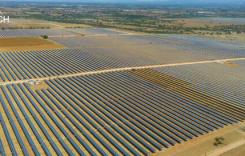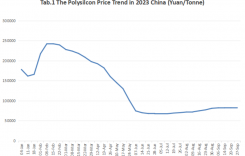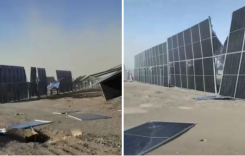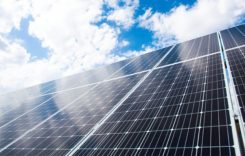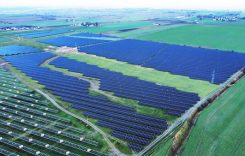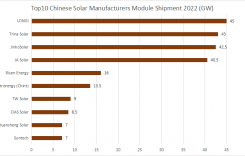SOURCE: CELL PRESS
CHANGCHUN, China, December. 23 2019 /PVTIME/ — Ten years after the publication of their first plan for powering the world with wind, water, and solar, researchers offer an updated vision of the steps that 143 countries around the world can take to attain 100% clean, renewable energy by the year 2050. The new roadmaps, publishing December 20 in the journal One Earth, follow up on previous work that formed the basis for the energy portion of the U.S. Green New Deal and other state, city, and business commitments to 100% clean, renewable energy around the globe–and use the latest energy data available in each country to offer more precise guidance on how to reach those commitments.
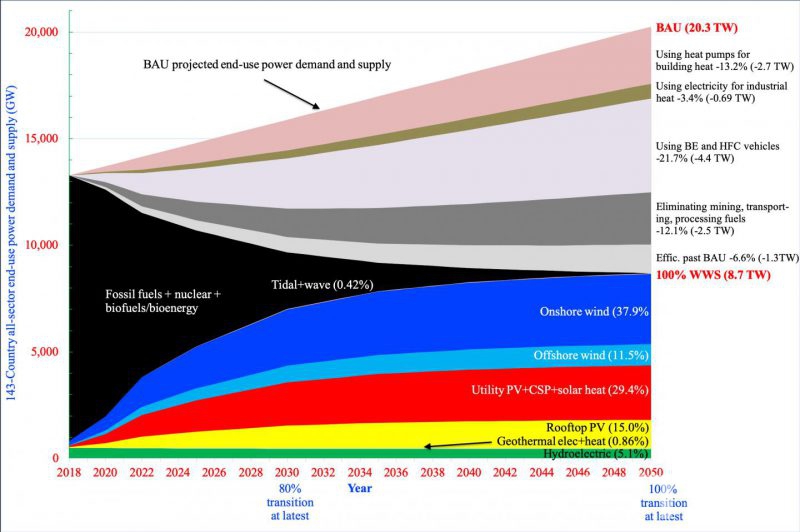
Credit: Jacobson et al. / One Earth
In this update, Mark Z. Jacobson (@mzjacobson) of Stanford University and his team find low-cost, stable grid solutions in 24 world regions encompassing the 143 countries. They project that transitioning to clean, renewable energy could reduce worldwide energy needs by 57%, create 28.6 million more jobs than are lost, and reduce energy, health, and climate costs by 91% compared with a business-as-usual analysis. The new paper makes use of updated data about how each country’s energy use is changing, acknowledges lower costs and greater availability of renewable energy and storage technology, includes new countries in its analysis, and accounts for recently built clean, renewable infrastructure in some countries.
“There are a lot of countries that have committed to doing something to counteract the growing impacts of global warming, but they still don’t know exactly what to do,” says Jacobson, a professor of civil and environmental engineering at Stanford and the co-founder of the Solutions Project, a U.S. non-profit educating the public and policymakers about a transition to 100% clean, renewable energy. “How it would work? How it would keep the lights on? To be honest, many of the policymakers and advocates supporting and promoting the Green New Deal don’t have a good idea of the details of what the actual system looks like or what the impact of a transition is. It’s more an abstract concept. So, we’re trying to quantify it and to pin down what one possible system might look like. This work can help fill that void and give countries guidance.”
The roadmaps call for the electrification of all energy sectors, for increased energy efficiency leading to reduced energy use, and for the development of wind, water, and solar infrastructure that can supply 80% of all power by 2030 and 100% of all power by 2050. All energy sectors includes electricity; transportation; building heating and cooling; industry; agriculture, forestry, and fishing; and the military. The researchers’ modeling suggests that the efficiency of electric and hydrogen fuel cell vehicles over fossil fuel vehicles, of electrified industry over fossil industry, and of electric heat pumps over fossil heating and cooling, along with the elimination of energy needed for mining, transporting, and refining fossil fuels, could substantially decrease overall energy use.
The transition to wind, water, and solar would require an initial investment of $73 trillion worldwide, but this would pay for itself over time by energy sales. In addition, clean, renewable energy is cheaper to generate over time than are fossil fuels, so the investment reduces annual energy costs significantly. In addition, it reduces air pollution and its health impacts, and only requires 0.17% of the 143 countries’ total land area for new infrastructure and 0.48% of their total land area for spacing purposes, such as between wind turbines.
“We find that by electrifying everything with clean, renewable energy, we reduce power demand by about 57%,” Jacobson says. “So even if the cost per unit of energy is similar, the cost that people pay in the aggregate for energy is 61% less. And that’s before we account for the social cost, which includes the costs we will save by mitigating health and climate damage. That’s why the Green New Deal is such a good deal. You’re reducing energy costs by 60% and social costs by 91%.”
In the U.S., this roadmap–which corresponds to the energy portion of the Green New Deal, which will eliminate the use of all fossil fuels for energy in the U.S.–requires an upfront investment of $7.8 trillion. It calls for the construction of 288,000 new large (5 megawatt) wind turbines and 16,000 large (100 megawatt) solar farms on just 1.08% of U.S. land, with over 85% of that land used for spacing between wind turbines. The spacing land can double, for instance, as farmland. The plan creates 3.1 million more U.S. jobs than the business-as-usual case, and saves 63,000 lives from air pollution per year. It reduces energy, health, and climate costs 1.3, 0.7, and 3.1 trillion dollars per year, respectively, compared with the current fossil fuel energy infrastructure.
And the transition is already underway. “We have 11 states, in addition to the District of Columbia, Puerto Rico, and a number of major U.S. cities that have committed to 100% or effectively 100% renewable electric,” Jacobson says. “That means that every time they need new electricity because a coal plant or gas plant retires, they will only select among renewable sources to replace them.”
He believes that individuals, businesses, and lawmakers all have an important role to play in achieving this transition. “If I just wrote this paper and published it and it didn’t have a support network of people who wanted to use this information,” he says, “it would just get lost in the dusty literature. If you want a law passed, you really need the public to be supportive.”
Like any model, this one comes with uncertainties. There are inconsistencies between datasets on energy supply and demand, and the findings depend on the ability to model future energy consumption. The model also assumes the perfect transmission of energy from where it’s plentiful to where it’s needed, with no bottlenecking and no loss of energy along power lines. While this is never the case, many of the assessments were done on countries with small enough grids that the difference is negligible, and Jacobson argues that larger countries like the U.S. can be broken down into smaller grids to make perfect transmission less of a concern. The researchers addressed additional uncertainties by modeling scenarios with high, mean, and low costs of energy, air pollution damage, and climate damage.
The work deliberately focuses only on wind, water, and solar power and excludes nuclear power, “clean coal,” and biofuels. Nuclear power is excluded because it requires 10-19 years between planning and operation and has high costs and acknowledged meltdown, weapons proliferation, mining, and waste risks. “Clean coal” and biofuels are not included because they both cause heavy air pollution and still emit over 50 times more carbon per unit of energy than wind, water, or solar power.
One concern often discussed with wind and solar power is that they may not be able to reliably match energy supplies to the demands of the grid, as they are dependent on weather conditions and time of year. This issue is addressed squarely in the present study in 24 world regions. The study finds that demand can be met by intermittent supply and storage throughout the world. Jacobson and his team found that electrifying all energy sectors actually creates more flexible demand for energy. Flexible demand is demand that does not need to be met immediately. For example, an electric car battery can be charged any time of day or night or an electric heat pump water heater can heat water any time of day or night. Because electrification of all energy sectors creates more flexible demand, matching demand with supply and storage becomes easier in a clean, renewable energy world.
Jacobson also notes that the roadmaps this study offers are not the only possible ones and points to work done by 11 other groups that also found feasible paths to 100% clean, renewable energy. “We’re just trying to lay out one scenario for 143 countries to give people in these and other countries the confidence that yes, this is possible. But there are many solutions and many scenarios that could work. You’re probably not going to predict exactly what’s going to happen, but it’s not like you need to find the needle in the haystack. There are lots of needles in this haystack.”




